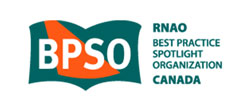Hoarding in the Home: A Toolkit for the Home Healthcare Provider


Hoarding is a mental health disorder characterized by difficulties with discarding possessions, yielding cluttered and chaotic home environments that can pose significant safety concerns, impairment to functioning, and distress for those who live in and encounter these situations. Understanding the condition and the strategies available to support individuals who hoard are important skills for the home care provider and are described here in the context of one community organization’s response via the development of a Community Clutter and Hoarding Toolkit.
Hoarding is neither a new mental health condition, nor an uncommon one: recent prevalence estimates suggest that about 5% of the adult population engages in hoarding behavior (Samuels et al., 2008). In the last decade, popular television shows, elevated media coverage, and the exponential growth in hoarding research have significantly increased public and professional awareness of this phenomenon (Pertusa et al., 2010; Snowdon & Halliday, 2004). Understanding this disorder and the specific strategies available to home healthcare providers to improve safety conditions in cluttered environments can be invaluable to healthcare workers and the people they support (Chater & Levitt, 2009).
Hoarding is characterized by a marked difficulty with discarding objects of seemingly limited value, leading to cluttered homes, safety concerns, distress, and impaired functioning (Frost & Hartl, 1996). Most people who hoard engage in the disproportionate acquisition of possessions, typified by excessive shopping, “bargain hunting,” or collecting of trash and other giveaway items that do not have a practical place to be stored or used (Frost et al., 2009). This imbalance between acquisition and discarding results in the accumulation of excess clutter. Clutter is typically composed of common household items such as papers, books, clothes, food, and furniture, which are spread about the home in disorganized piles that blend important and useful possessions with trash, disused, and unlike items. Spaces within the home of someone who hoards are frequently inaccessible and unusable—the shower, for example, may be filled with stacked clothes, the bed so covered with belongings that occupants must sleep in a chair, or a broken freezer inoperable as it cannot be accessed by the repair technician. It is estimated that in about half of the homes of people who hoard, the sink, tub, stovetop, or refrigerator is unusable, and that 1 in 10 homes do not have a working toilet (Frost et al., 2000).
The functional and social implications of hoarding are significant (Tolin, Frost, Steketee, & Fitch, 2008; Tolin, Frost, Steketee, Gray, & Fitch, 2008). Hoarding behaviors and excessive clutter are also frequently described as a source of significant distress and frustration for family members of people who hoard, leading to levels of rejection comparable to that measured among family members of people with schizophrenia (Tolin, Frost, Steketee, & Fitch, 2008; Tolin, Frost, Steketee, Gray, & Fitch, 2008).
Excess clutter can seriously compromise health and safety. Fires, floods, falls, unhygienic conditions, mold, infestations, and unmanaged garbage create significant risks for the home’s occupants as well as other units or dwellings in the immediate locale (Frost, Steketee, & Williams 2000; Frost, Steketee, Williams, & Warren, 2000; Lucini et al., 2009; Steketee et al., 2001). Eviction and other court proceedings may result in homelessness, expensive fines, or an unwanted move into a long-term-care facility (Frost, Steketee, & Williams 2000; Frost, Steketee, Williams, & Warren, 2000; Tolin, Frost, Steketee, & Fitch, 2008; Tolin, Frost, Steketee, Gray, & Fitch, 2008). The serious nature of health, safety, and functional impairment characteristic of people who hoard highlights the need for community health providers to have knowledge and the tools to respond effectively to situations of excess clutter (Valente, 2009).
This article describes the experiences of clients and health providers who encounter hoarding in their community practice, reviewing specific strategies for intervening through a skill development and harm reduction framework. This approach will be described within the context of a hoarding program and toolkit that was developed by one community-based, nonprofit health service agency (referred to herein as “the organization”).
Hoarding: How it Happens
The onset of hoarding symptoms typically occurs in early adolescence and follows a chronic and progressive course, yielding excess clutter and impairment by mid-to-late life (Frost & Gross, 1993; Grisham et al., 2006; Tolin et al., 2010; Winsberg et al., 1999). The appearance and severity of hoarding behaviors have been linked to the occurrence of traumatic and stressful life events both in childhood and across the lifespan (Grisham et al., 2006; Hartl et al., 2005; Samuels et al., 2008; Tolin et al., 2010). For example, individuals with hoarding behaviors are more likely to report a history of childhood break-ins, excessive physical discipline, or a parent with psychiatric illness (Samuels et al., 2008). The phenomenological research of Kellet et al. (2010) similarly concluded that people who hoard often understand their own behavior in terms of a reaction to childhood adversity, including the experience of learned emotional suppression in the face of authoritarianism and rejecting parenting styles and other abusive experiences. In adults, rates of interpersonal violence and the stressful experience of having a belonging taken by force are reported at disproportionately high rates and furthermore noted to trigger periods of symptom intensification (Cromer et al., 2007; Samuels et al., 2008; Tolin et al., 2010).
Exploring themes of emotional deprivation and loss can assist in the development of personalized case formulations (Box 1) and allow client and clinician alike to understand the emotional purpose clutter represents (Landau et al., 2011). This lays the foundation for clients to develop the skills to process their emotions as emotions, and relate to objects as the physical items that they are.



